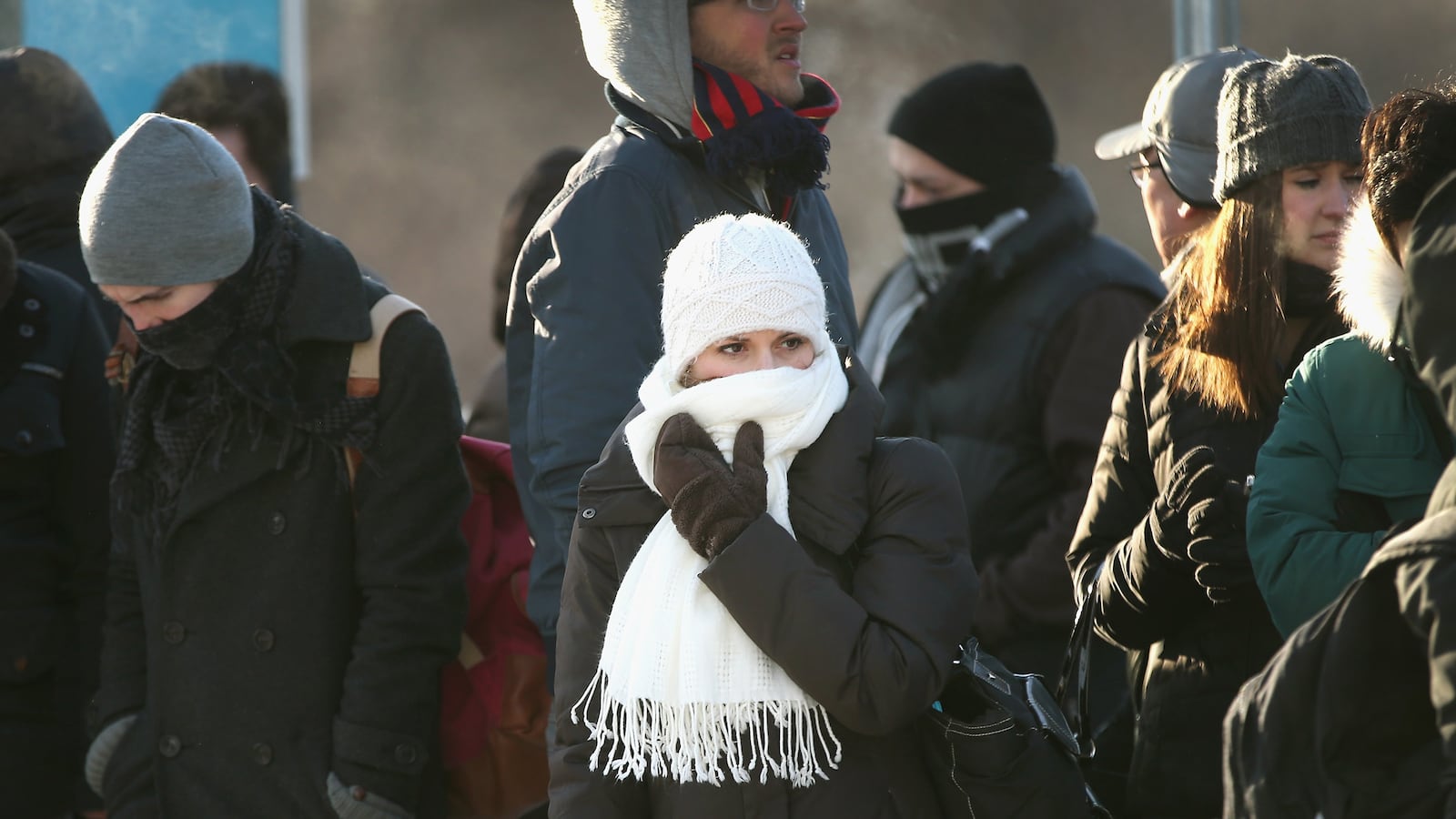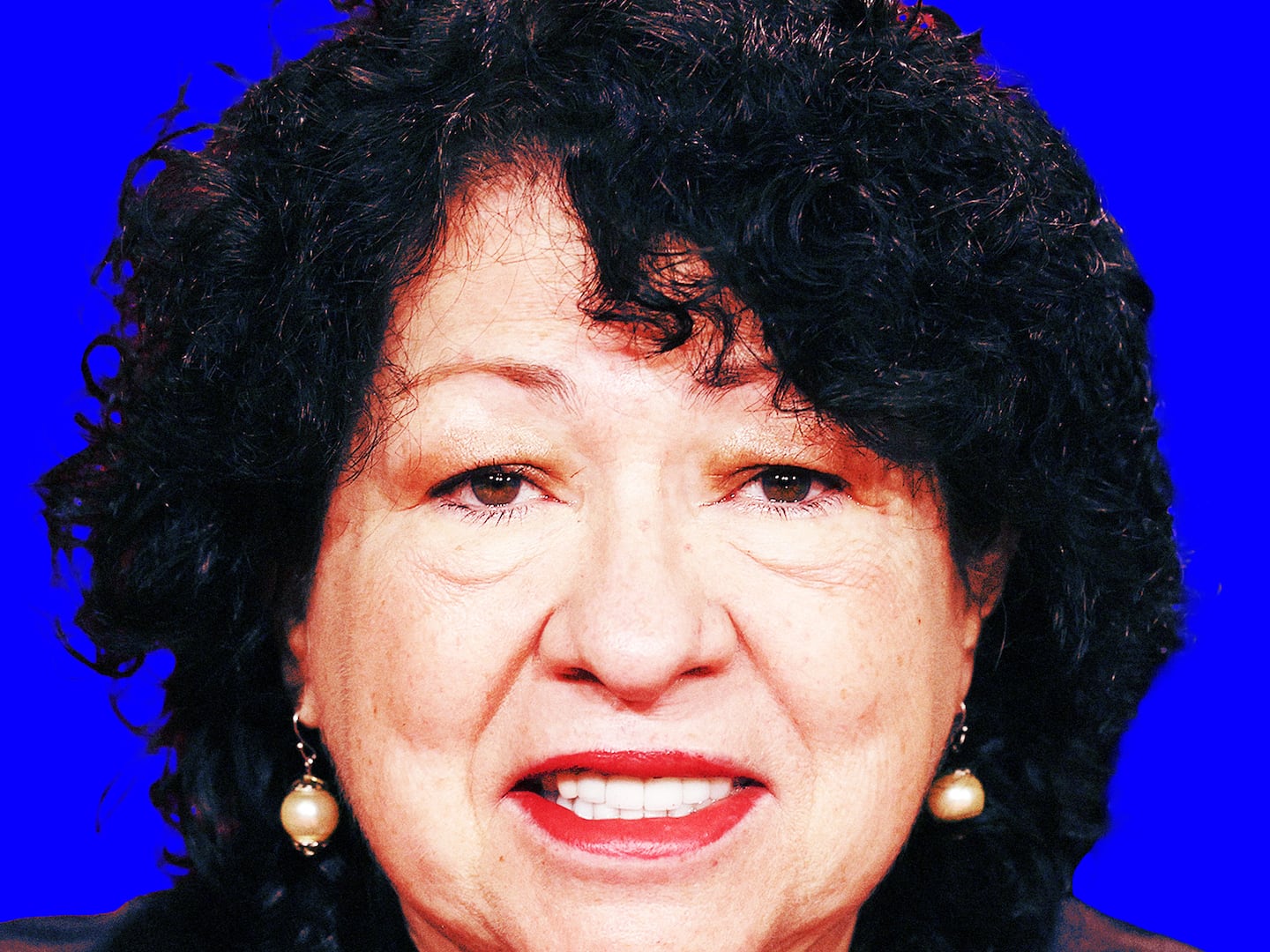My head is pounding, so I check the weather. The temperature has dropped significantly over the past couple of hours and there’s an 80 percent chance it will snow tonight. I get some solace in confirming the cause of the excruciating pain behind my eyes, but no relief. I can feel my stomach churning from all the Advil I’ve consumed today, but when I say to whoever will listen that I know a storm is coming because my head is killing me, I’m met with looks of confusion, skepticism, and doubt.
The “polar vortex” sweeping the country this week has brought snow and temperatures as low as 40 below zero to parts of the Midwest, halted travel, cancelled school, and burst pipes. But for many of the 36 million Americans who get migraines—that’s about 12 percent of the population—the drastic changes in temperature, harsh winds, and heavy snow that have defined this winter mean one thing: headaches. Debilitating, mind-numbing, distracting headaches.
The connection between weather and headaches has mystified me ever since I first learned there was one (my sister, father, and almost everyone on his side of the family suffers from the same affliction). After finally regaining clarity following a week of wild weather coupled with a relentlessly stupefying headache, I was determined to find out why, exactly, the weekly forecast is a predictor of my—and many others’—productivity while most people are completely unaffected. So I consulted a couple of experts: Susan Broner, medical director of the Manhattan Headache Center board certified in both neurology and headache medicine, and neurologist Alexander Mauskop, director and founder of the New York Headache Center.
Before diving into their eye-opening revelations about what causes weather-related headaches and how to keep them from totally ruining your life, both Broner and Mauskop clear up some common misconceptions.
First of all, migraines often are misdiagnosed as sinus headaches. So, if you think you suffer from sinus headaches because you regularly experience pain triggered by weather, you’re probably actually getting migraines. Historically, migraines were labeled a hysterical female condition, characterized by throbbing, one-sided, nauseating pain. And while the majority of sufferers are, in fact, female (more on that later) most migraine attacks don’t fit the stereotype, instead manifesting themselves in dull, persistent pain, mood changes and decreased ability to concentrate.
Migraines are triggered by a variety of causes that differ from person to person, but Broner says that more than 50 percent of them are triggered by weather changes. Mauskop breaks weather triggers into four categories: high humidity, high temperatures, strong winds, and—the most popular—drops in barometric pressure that occur ahead of rain or snow storms. New research has narrowed down the triggers even more, with one study by the University of Cincinnati College of Medicine finding that being within 25 miles of a lightning strike can increase a migraine sufferer’s likelihood of attack by 28 percent.
“When the barometric pressure drops outside, people with arthritis get pain in their joints because it’s an enclosed cavity,” Mauskop says. “For people with migraines, the pressure inside your brain increases. When it’s very hot, your body tries to sweat it off by opening blood vessels. For migraine patients, the opening of blood vessels causes headaches.”
Mauskop developed an iPhone app called the Migralex Headache Relief Diary that allows users to determine which triggers to avoid by tracking their headaches by pain level, location, duration, and weather. Usually headaches aren’t caused by weather alone, but a combination of triggers, such as lack of sleep, stress, skipping meals, eating too many carbs or foods with lots of preservatives (anything pickled, dried, cured, smoked—basically anything delicious), drinking alcohol, and not exercising.
“The rain itself might not do anything to you. But if you eat the wrong food before it’s about to rain, you can get a headache,” says Mauskop. “If I’m on vacation and have a glass of wine, no problem. But if I’m tired and stressed out, that same exact wine will give me a headache.”
People who are genetically predisposed to headaches—and research shows that it is indeed a genetic disorder—should make an extra effort to do the basic things we are supposed to do anyway to stay healthy: exercise regularly, get at least seven hours of sleep every night and not sleep in on the weekends, eat regular meals that include dark, leafy greens, and drink lots of water. Dehydration, in heat and humidity as well as dry winter weather, is a major headache trigger. So is taking too much pain medication.
Which brings us to treatments. Even the most astute observer of the healthiest lifestyle can fall victim to the pangs of weather-related headaches. Both Mauskop and Broner discourage taking over the counter drugs, such as Advil, Aleve, and Excedrin in anticipation of a headache, because over-medicating can actually cause headaches. It’s better to wait until a headache has actually set in before popping pain relievers. They also recommend natural treatments, magnesium supplements, acupuncture, meditation or biofeedback: a type of therapy done by electronic monitoring that trains patients to relax and control stress. There are, of course, also prescription drugs and even Botox, which the FDA approved in 2010 to treat and prevent chronic migraines.
For women, who are disproportionately plagued by migraines at a ratio of three to one, hormone-regulating treatments can help. Mauskop explains that headaches are influenced by fluctuating estrogen levels, often beginning during puberty and subsiding during pregnancy and after menopause. Continuous contraception that prevents menstruation can also prevent migraines.
Anyone who gets headaches knows that not only are they in the minority but that their ailment is often dismissed by those who’ve never experienced it.
“People are really not very sympathetic. They think, ‘It’s just a headache, take some Advil, get on with your life,’” says Mauskop. “But it’s not just a headache, it’s a serious illness.”
The World Health Organization agrees, ranking migraines among the top 20 most debilitating disorders. So if the thought of more manic winter weather induces a particular kind of panic, remember that you are not being dramatic, you’re not alone, and there are ways to tame your pain.






